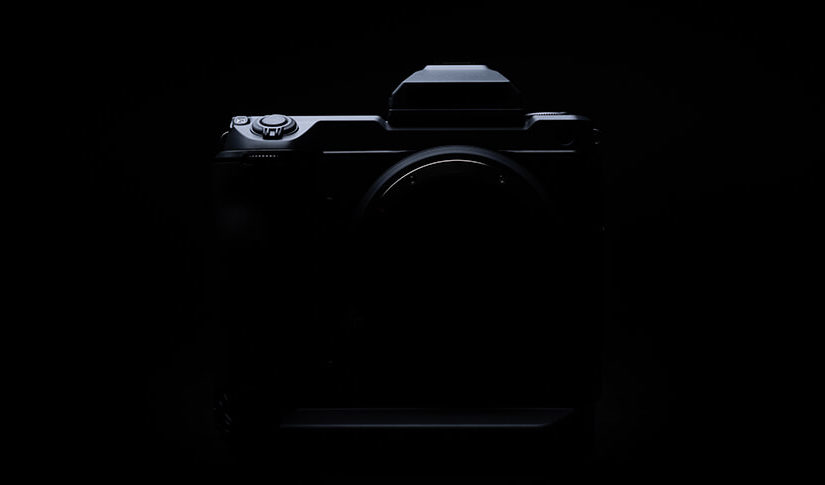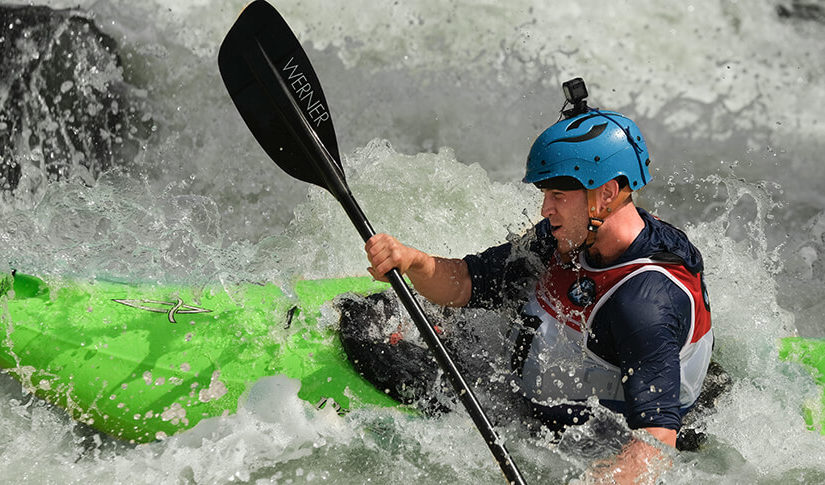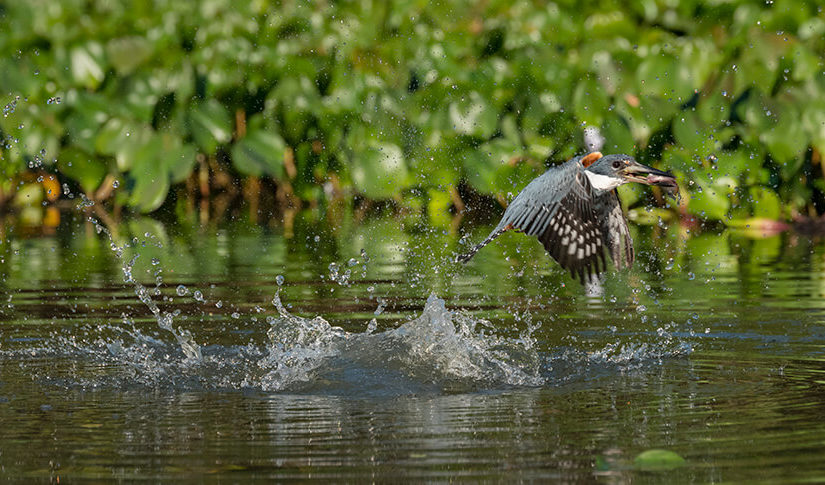
 6 minute read
6 minute read
Video Glossary
Starting out in videography can be a confusing process, and that’s why we’ve created this glossary of videography terms to help guide you through.
As the digital world continues to grow, there’s more and more video in our daily lives. And as a reflection of that, the needs of image makers have grown, too, so videography is becoming an integral part of our creative process.
Camera technology has also developed to meet this need and it’s now easier than ever to explore the world of moving images. For example, every current camera in the FUJIFILM X Series offers 4K class video. This means that as well as making awesome photos, you can film at cinema-quality resolution all in one tiny package!
Although ultimately very rewarding, taking your first steps in video can be an intimidating process, not least because of the amount of technical jargon you need to understand. That’s why we’ve put together a handy glossary of some of the most essential moviemaking terms to help you decode the terminology and be free to create.
Filming Terms
B-roll
General footage associated with the primary subject that is recorded to add interest, add context and help tell the story (see ‘Cutaway’ below).
Dolly
Anything with wheels that a camera is attached to, enabling smooth, horizontal camera movements. Can also be used as a verb meaning ‘move the camera’.
Gimbal
A mechanical device that stabilises the camera and lens during movement, producing smoother footage.
Headroom
This is the amount of space between the top of your subject’s head and the top edge of the frame. Too little can cut off part of the subject’s head, too much can make it look like they’re falling off the bottom of the frame.
Lead Room
Also known as ‘nose room’, this is the distance between the front of your subject and the side of the frame they’re facing towards.
Matte Box
An attachment to the end of your lens that blocks stray light and prevents flare, frequently with slots to hold filters in place.
Over the Shoulder
Often used in interviews, this is an angle of view that frames one subject from over the back and shoulder of another.
Panning
Turning the camera from left to right or right to left horizontally from a fixed point.
POV
Short for ‘point of view’, this is footage that is filmed as though it is being seen through the eyes of the videographer or a character in the narrative.
Rack Focusing
Also known as pulling focus, this is the technique of swapping focus between two different subjects in the same frame.
Slating
The process of banging a clapperboard at the start of a take to act as a point of audio and visual reference during editing. You can mimic this by clapping hands at the start of footage.
Slider
A small, more portable form of dolly. A slider is a lightweight set of rails that the camera rolls on to create smooth linear movement.
Storyboard
A sequence of drawings or images created to provide a visualisation of the scene before filming begins.
Tilting
Pivoting the camera up or down vertically from a fixed point.
Tracking
Following persons or vehicles along with the camera. The effect of smooth linear camera movement that is created by using a dolly, slider, gimbal or crane.
Two Shot
When two subjects appear in the same frame.
Video Editing Terms
Colour Grading
The process of enhancing the visual appearance of footage using editing software in post-production.
Cross Fade
Also known as a ‘dissolve’ or a ‘mix’, this is a slow gradual transition between shots.
Cut-in or Insert
A brief piece of footage of a particular detail that can add to the story. For example, a close-up of a subject’s body language like a foot tapping to show nervousness.
Cutaway
When a scene is interrupted with an edit to related footage that helps to add context or tell the story (see ‘B-roll’ above).
Fade
When the footage gradually goes from or to a single colour, described as a fade in or a fade out.
Foley
The art of recreating sound effects in a studio after footage has been filmed in order to enhance the realism of the scene.
J-cut
A type of cut where the audio of the upcoming footage precedes the video.
L-cut
A type of cut where the video of the upcoming footage precedes the audio.
Lower Third
Text that appears as an overlay, usually in the bottom corner of the screen. Often used to introduce a person speaking.
Montage
A sequence of short clips that are edited together, often to music, frequently used to show passage of time.
Rough Cut
The result of the first round of edits where the movie begins to take its final form, but is not ready for screening.
Rushes or Dailies
The raw, unedited footage taken straight from camera.
Soundtrack
The body of music that accompanies a video.
Stop Motion
A form of animation where still photographs of inanimate objects are arranged in sequence to create the feeling of movement.
Synchronization
The process of ensuring the video and any separately recorded audio are perfectly aligned.
Wipe
When one shot is replaced with another using a line or shape that moves from one side of the frame to another, from the centre outwards or vice versa.

Sound Recording Terms
Boom Microphone
A microphone that is attached to the end of a long pole, enabling it to be close to the sound source, usually while remaining out of the frame.
Diegetic Sound
Any sound that comes from something or someone that is actually in the story. For example, a character talking, the rumble of traffic on a busy street, the sound of music coming from a stereo (also see ‘Non-Diegetic Sound’ below).
Handheld Microphone
A microphone that is designed to be comfortably held in the hand, often used for live interviews in the field when there is little time for audio setup.
Lavalier Microphone
Also called a clip mic, or lapel mic, this is a small microphone that clips onto a subject’s clothing to allow good recording of speech and hands-free operation.
Non-Diegetic Sound
Any sound that is not made by an aspect of the story. For example, a narrator talking, theatrical music or sound effects designed to add drama (also see ‘Diegetic Sound’ above).
Room Tone
Also called ‘Presence’, this is the ambient background sound of a particular room or location. Recording this, separate to any dialogue, is essential for ensuring a smooth sound editing in post-production and enhancing the realism of a scene.
Video Technology Terms
Bit Rate
The speed at which video data is recorded by internal camera memory or an external recorder. Measured in megabits per second or Mbps, this has a direct effect on the quality of your footage. A higher bit rate means less compression of the signal, yielding higher quality.
DCI 4K
A screen resolution of 4096×2160 pixels. Usually used in theatrical productions, it has a slightly wider aspect ratio than standard UHD 4K.
Frame Rate
Measured in frames per second (fps), this is the frequency at which frames are captured in recording or displayed during video playback. Higher frame rates make for smoother footage, whereas lower frame rates can appear jerky. 24fps is the standard frame rate for movies and dramatic TV shows, with higher rates used for fast action sports and nature footage. Where slow motion is required, footage can be filmed at higher speeds like 60fps, 120fps, or 240fps, and be played back at standard speeds.
Full HD
A screen resolution of 1920×1080 pixels.
HD
A screen resolution of 1280×720 pixels.
HDMI
The standard high-definition video connection used in televisions and pro-sumer cameras.
Log Profile
A type of signal encoding that creates video with a wide dynamic range, allowing more freedom when editing in post-production. FUJIFILM cameras use F-Log format.
UHD 4K
A screen resolution of 3840×2160 pixels most frequently used on television sets.
Compare Video on X Series Cameras
All current cameras in the FUJIFILM X Series lineup offer fantastic video capabilities. There are a number of different choices at different price points that can suit everything from blowing out candles at a birthday party, right through to professional cinematic productions.
Use the comparison table below to compare some of the most important features:

X-T30

X-E4

X-S10

X-T4

X-Pro3


























































